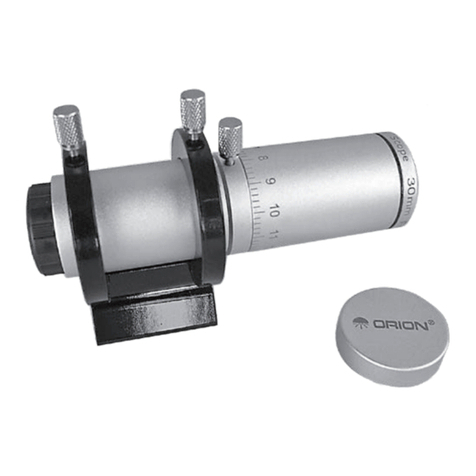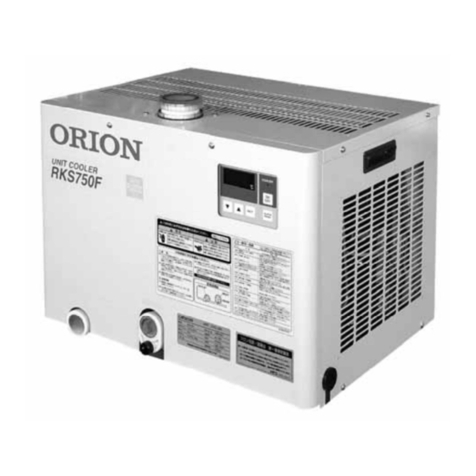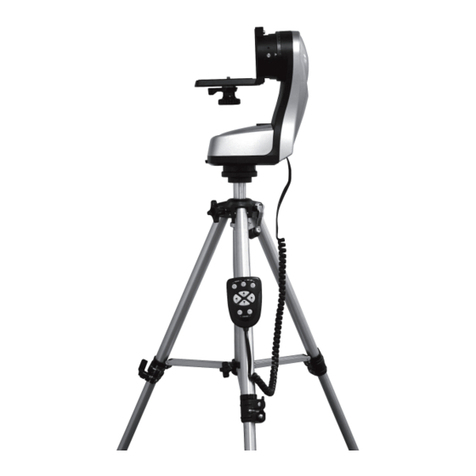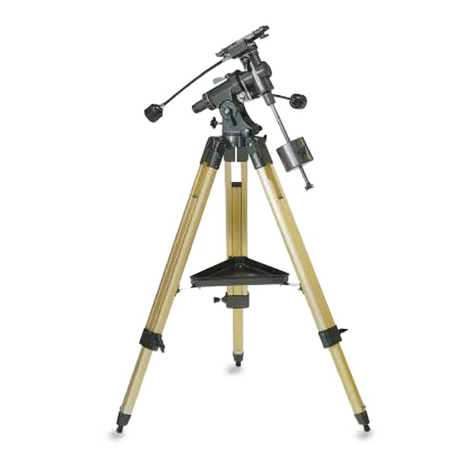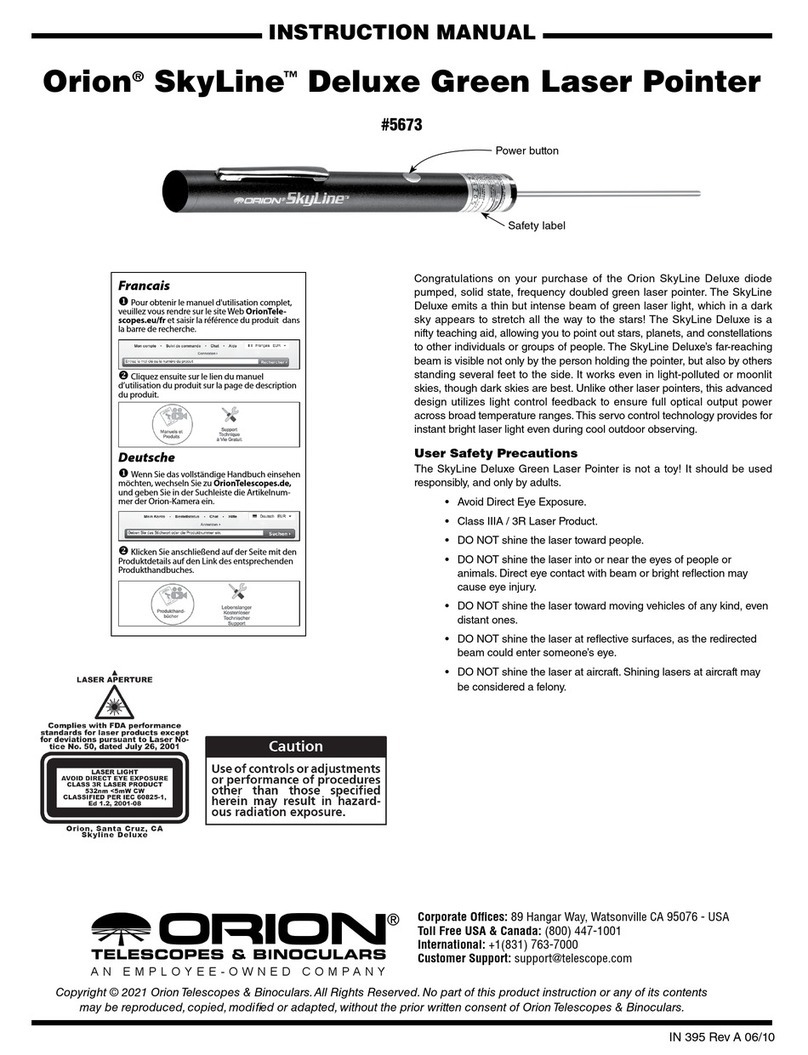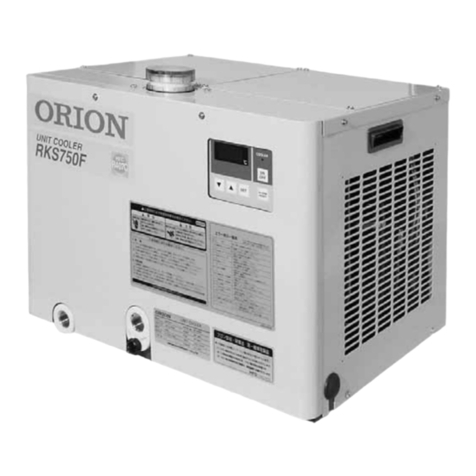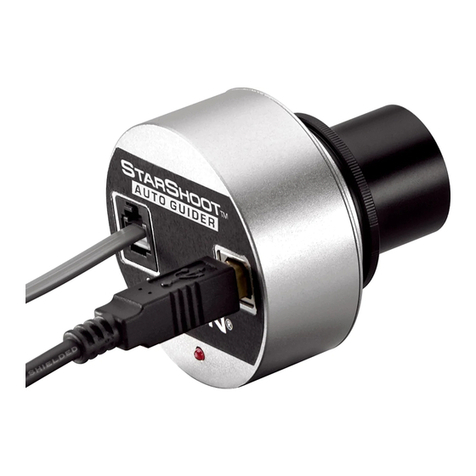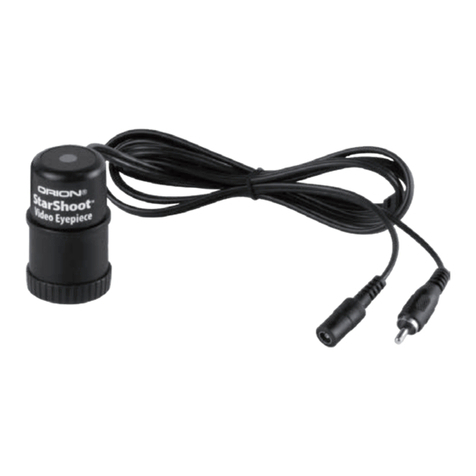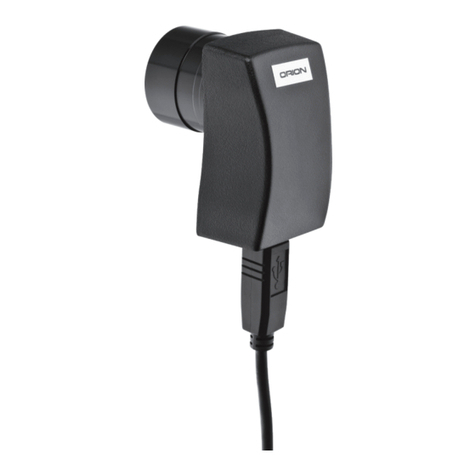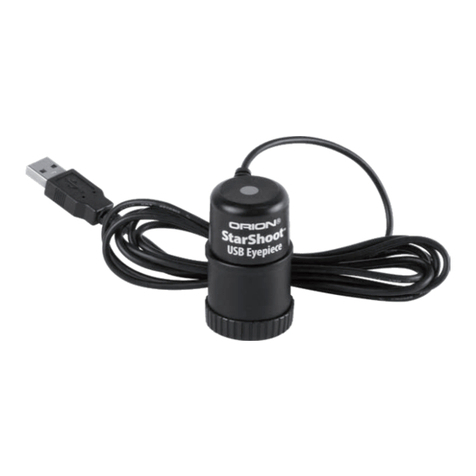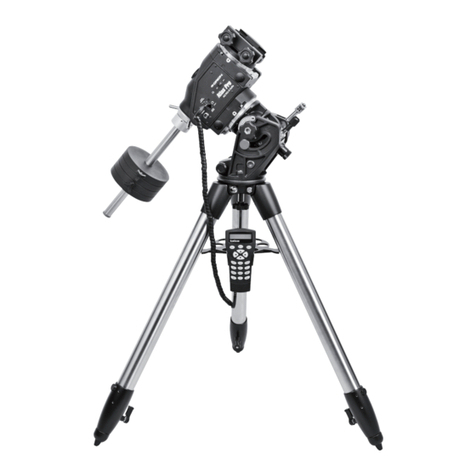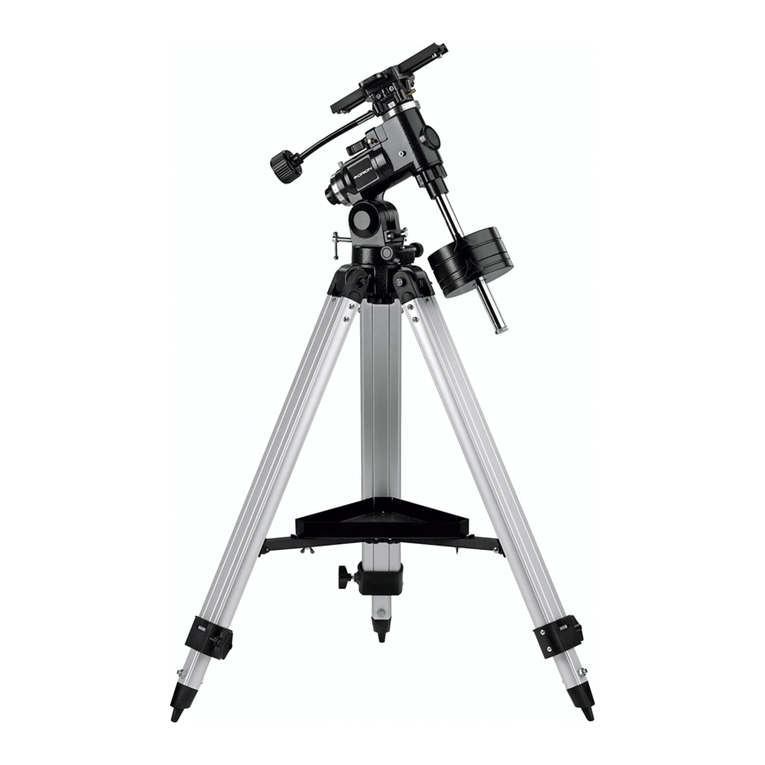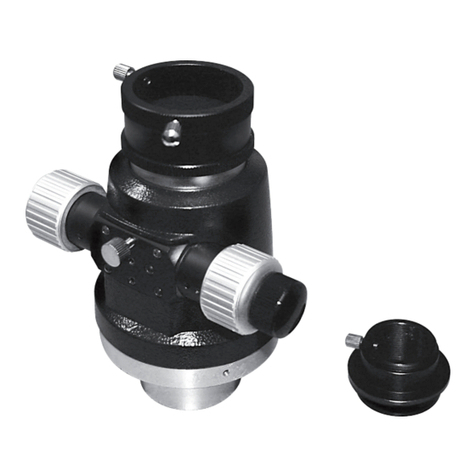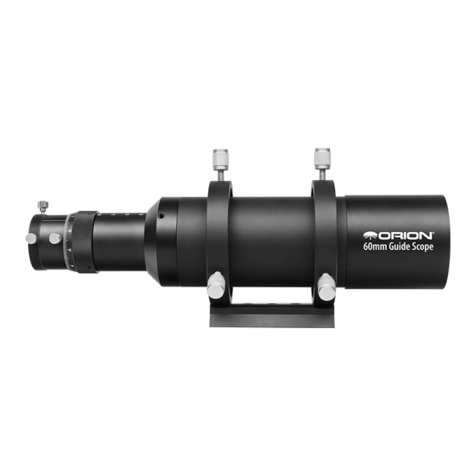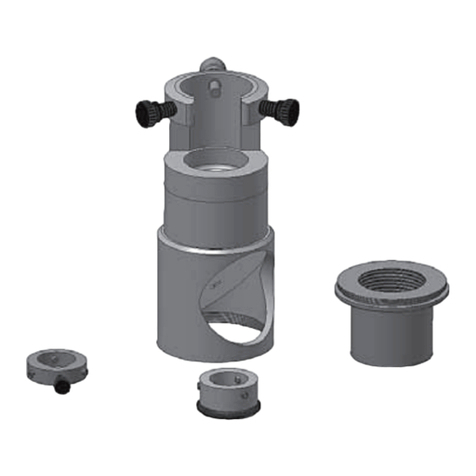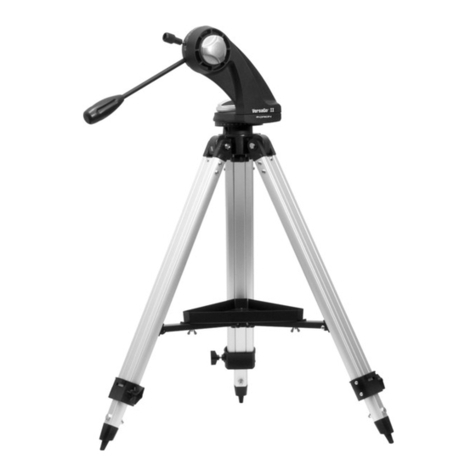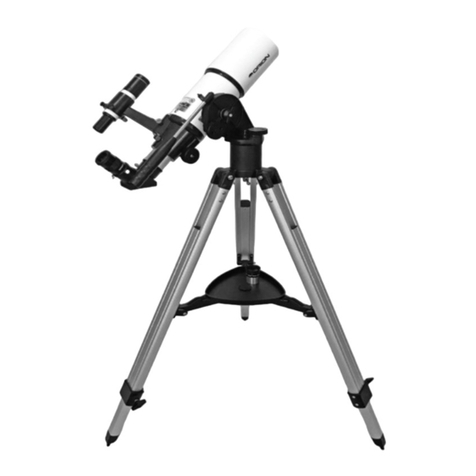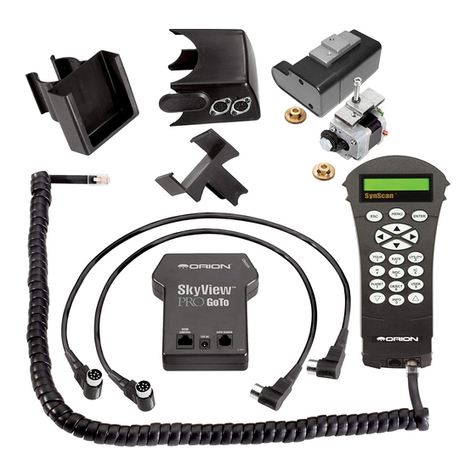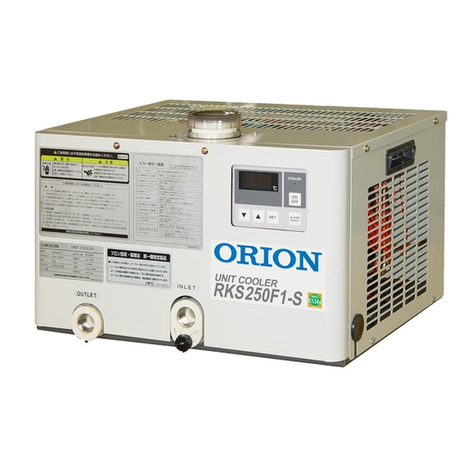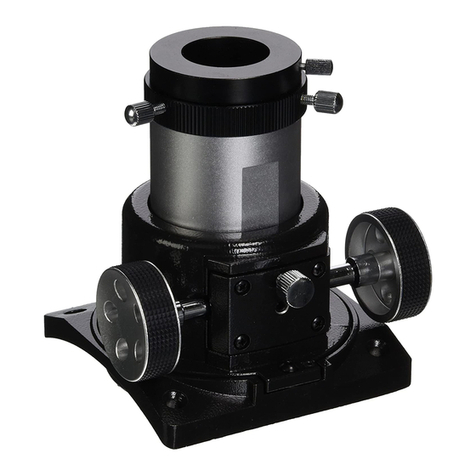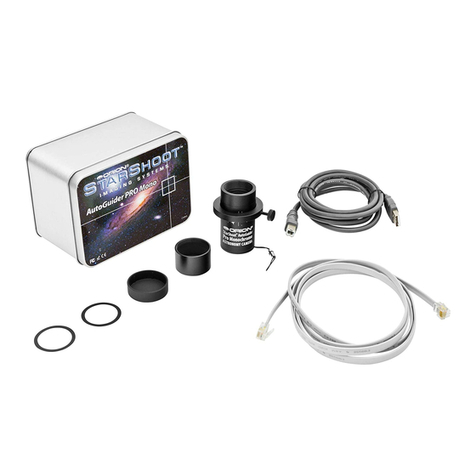8
The Dec. slow-motion control cable can move the tele-
scope a maximum of 25°. This is because the Dec.
slow-motion mechanism has a limited range of mechan-
ical travel. (The R.A. slow-motion mechanism has no
limit to its amount of travel.) If you can no longer rotate
the Dec. control cable in a desired direction, you have
reached the end of travel, and the slow-motion mecha-
nism should be reset. This is done by first rotating the
control cable several turns in the opposite direction from
which it was originally being turned. Then, manually
slew the telescope closer to the object you wish to
observe (remember to first loosen the Dec. lock thumb
screw). You should now be able to use the Dec. slow-
motion control cable again to fine adjust the telescope’s
position.
Tracking Celestial Objects
When you observe a celestial object through the tele-
scope, you’ll see it drift slowly across the field of view.To
keep it in the field, if your equatorial mount is polar-
aligned, just rotate the R.A. slow-motion control. The
Dec. slow-motion control is not needed for tracking.
Objects will appear to move faster at higher magnifica-
tions, because the field of view is narrower.
Optional Motor Drives for Automatic
Tracking and Astrophotography
An optional DC motor drive (EQ-1M, Orion part #7826)
can be mounted on the R.A. axis of the EQ-1 Equatorial
Mount to provide hands-free tracking. Objects will then
remain stationary in the field of view without any manu-
al adjustment of the R.A. slow-motion control.The motor
drive is necessary for astrophotograpy.
Understanding the Setting Circles
The setting circles on an equatorial mount enable you to
locate celestial objects by their "celestial coordinates."
Every astronomical object resides in a specific location
on the "celestial sphere." That location is denoted by two
numbers: its right ascension (R.A.) and declination
(Dec.). In the same way, every location on Earth can be
described by its longitude and latitude. R.A. is similar to
longitude on Earth, and Dec. is similar to latitude. The
R.A. and Dec. values for celestial objects can be found
in any star atlas or star catalog.
So, the coordinates for the Orion Nebula listed in a star
atlas will look like this:
R.A. 5h 35.4m Dec. -5° 27'
That’s 5 hours and 35.4 minutes in right ascension, and
-5 degrees and 27 arc-minutes in declination (the nega-
tive sign denotes south of the celestial equator). There
are 60 minutes in 1 hour of R.A and there are 60 arc-
minutes in 1 degree of declination.
The mount’s R.A. setting circle is scaled in hours, from
1 through 24, with small hash marks in between repre-
senting 10 minute increments. The numbers closest to
the R.A. axis gear apply to viewing in the Southern
Hemisphere, while the numbers above them apply to
viewing in the Northern Hemisphere. The Dec. setting
circle is scaled in degrees, with each small hash mark
representing 2.5°.
Before you can use the setting circles to locate objects,
the mount must be well polar aligned, and the setting
circles must be calibrated. The declination setting circle
was calibrated at the factory, and should read 90° when
the telescope optical tube is parallel with the R.A. axis.
Calibrating the Right Ascension
Setting Circle
1. Identify a bright star near the celestial equator and
look up its coordinates in a star atlas.
2. Loosen the R.A. and Dec. lock thumb screws on the
equatorial mount, so the telescope optical tube can
move freely.
3 Point the telescope at the bright star near the celes-
tial equator whose coordinates you know. Center the
star in the telescope’s field of view. Lock the R.A. and
Dec. lock thumb screws.
4. Rotate the R.A. setting circle so the pointer indicates
the R.A. listed for the bright star in the star atlas.
Finding Objects With the Setting Circles
Now that both setting circles are calibrated, look up in a
star atlas the coordinates of an object you wish to view.
1. Loosen the Dec. lock thumb screw and rotate the tel-
escope until the Dec. value from the star atlas
matches the reading on the Dec. setting circle.
Retighten the lock thumb screw. Note: If the tele-
scope is aimed south and the Dec. setting circle
pointer passes the 0° indicator, the value on the Dec.
setting circle becomes a negative number.
2. Loosen the R.A. lock thumb screw and rotate the tel-
escope until the R.A. value from the star atlas
matches the reading on the R.A. setting circle.
Retighten the lock thumb screw.
Most setting circles are not accurate enough to put an
object dead-center in your finder scope’s field of view,
but they’ll get you close, assuming the equatorial mount
is accurately polar-aligned. The R.A. setting circle
should be re-calibrated every time you wish to locate a
new object. Do so by calibrating the setting circle for the
centered object before moving on to the next one.
